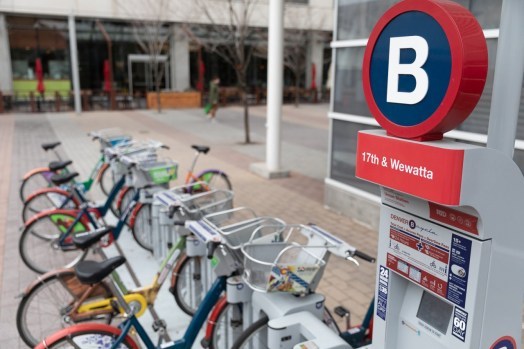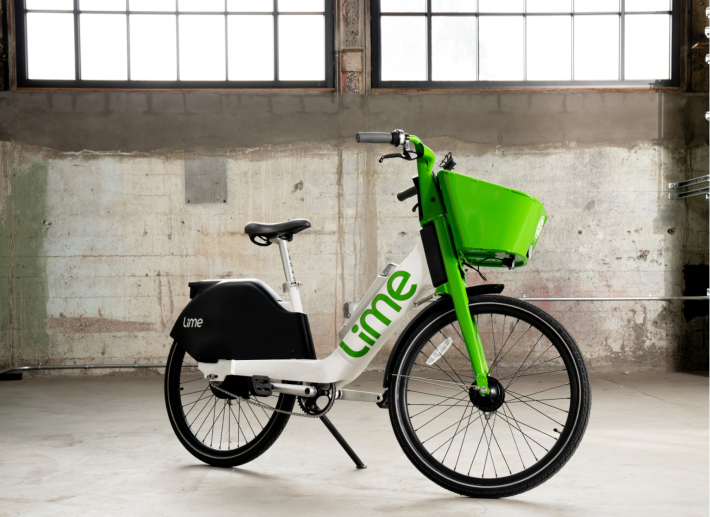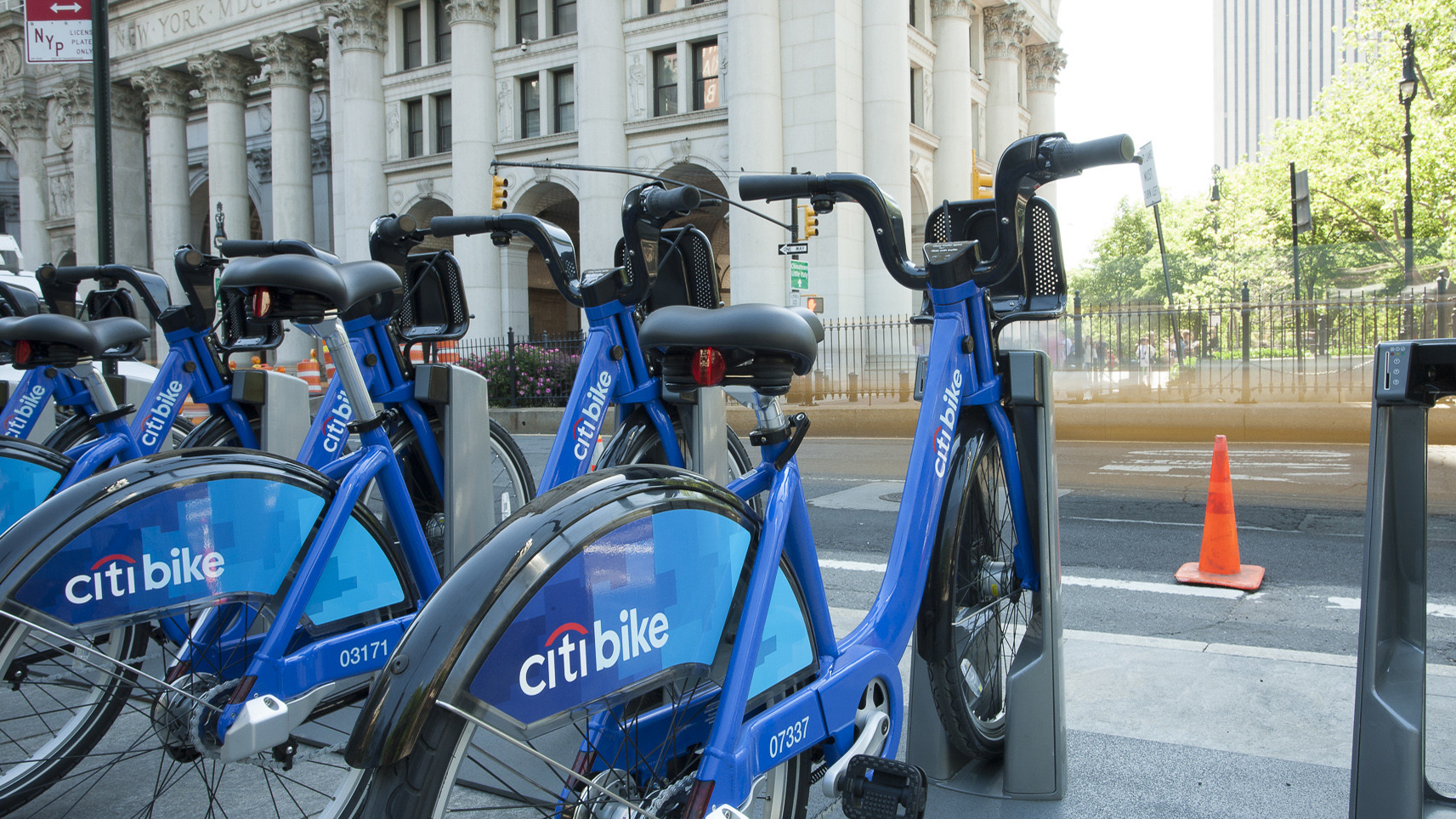This piece first appeared in Eno Transportation Weekly, a publication of the Eno Center for Transportation.
Even though one-third of all docked bike share systems closed permanently at the beginning of the COVID-19 pandemic, the number of customers using bike share in the U.S. and Canada is now at an all-time high. Thank you, e-bikes.
E-bikes have been steadily gaining market share on city streets and suburban roads. In 2016, classic bikes outsold e-bikes in the U.S. by a 50 to 1 ratio. Today, the ratio is about 4 to 1 and the gap is shrinking.
Bike Share to E-Bike Share
Mia Kohout, the CEO of Vancouver Bike Share Inc, says e-bikes have been a “big game changer for the shared bike industry.” Not only has Vancouver’s system fully recovered from the pandemic, but thanks to its launch of e-bikes, the number of annual bike share rides exceeded one million, for the first time, in 2023.
In New York, nearly half the rides on the Citi Bike system are now on e-bikes, even though they make up only about one-fifth of the bike sharing fleet. That is one reason why the number of Citi Bike trips in New York has nearly doubled compared to pre-pandemic levels. In Washington, D.C., the number of bike share users has also soared with more riders now choosing e-bikes over classic bikes. When Heartland Bike Share in Omaha first deployed e-bikes in 2018, it saw about a 30% increase in trips and that has continued every year since.
This week, panelists at an Eno Center for Transportation webinar shed light on the evolving landscape of bikeshare programs, particularly in light of the growing prominence of e-bikes. The webinar titled “Bike Sharing: Creating Successful Programs that are Financially Sustainable,” is available on Eno’s website.

Benny Foltz, the CEO of Nebraska’s ROAM Share, said Omaha made the transition to an all e-bike system, because “They were preferred nearly 100% of the time. Classic bikes were only ridden when no e-bikes were available or riders didn’t understand the difference.” Part of the reason for the e-bike preference may be that Omaha is a relatively hilly city; although Foltz has seen a somewhat similar preference at his Lincoln bike share program, a city which is relatively flat. In that capital city, e-bikes are being used for more than 75 percent of the ride share trips even though they make up only 20 percent of the bikes.
Although e-bikes cost more than $3,000 each and are more costly than classic bikes to maintain, bike share programs see them as a worthwhile investment because they attract more users. Foltz predicted, “the future will be all e-bikes in all bike share programs.”
Waffiyyah Murray, the program manager for Philadelphia’s bike share program, said that e-bikes have also led to a marked increase in total ridership on her system. Well over half the trips taken in Philadelphia are now on e-bikes. Between 2022 and 2023, the number of trips on classic bikes fell 5% to 504,000 while the number of e-bikes trips increased 43% to 580,000. She highlighted the appeal of e-bikes, noting that “riders can take longer trips with less effort and it is especially attractive to seniors and people who live further from the center of the city.”
Referring to her Vancouver experience, Kohout said, “If the price was the same, everyone would choose e-bikes. The only reason people are choosing the classic bikes is because of the lack of subsidies.” Murray said, “Philadelphia is still trying to figure out the best pricing model. Knowing that the industry is trending to e-bikes, we want to make them affordable.”
Ingredients for Successful Programs
In November, Streetsblog’s Kea Wilson wrote in an article titled “Micromobility Is Having a Weird Year” how some bike share networks (including those in Louisville, Houston, and Minneapolis) had shut down for financial reaons. The panelists on this week’s webinar shared their insights on how to create successful programs that are financially sustainable.
One thing that was clear is that no city is too big or too small for a bike share system. Valentine in Nebraska has fewer than 3,000 residents, but offers a bike share system with one station and eight bikes. Meanwhile, New York has more than 2,100 Citi Bike stations and the system averaged over 85,000 trips a day in March. That level of use dwarfs ridership on most U.S. transit systems including the light rail lines in Seattle, Denver, and Dallas which cost billions of dollars to construct. Citi Bike’s ridership is even higher in the summer when the number of daily trips can exceed 140,000.
No matter the size, Murray talked about the importance of knowing your customers and potential customers. That means finding out how they feel about biking and bike share, and then designing a program that will overcome potential barriers such as those relating to safety, affordability, and bike riding skills.
Kohout noted, “Our busiest stations are along bike routes, and bike infrastructure is crucial for the success of bike share programs.” Sam Herr, the executive director of the North American Bikeshare & Scootershare Association said having dedicated lanes and paths for bicycles helps make a program successful, but it shouldn’t stop cities without good bicycle infrastructure from starting a bike share program. Foltz, who lives in a state that has consistently ranked as one of the nation’s least bike friendly, agreed and said that implementing a bike sharing program can help create a constituency to promote better bike infrastructure.
Although setting up and operating a new bike share program can be complicated logistically, politically, and financially, it has become easier in recent years because more organizations in the industry have experience managing programs and more private companies offer hardware and software services. Herr noted that her association has prepared reports and guides to help both new and existing ride share programs.
Numerous Financial Models
The organizational structure of bike share programs can be set up in numerous ways. Docking stations and bikes can be owned by either a public or private entity, while most systems are operated by either a business or a non-profit organization. Numerous financial models have also been implemented.
For example, the city of Philadelphia provided the initial investment to launch its program and the city owns most of the bicycles and stations. A private firm was hired to operate, maintain, and market the system. To pay for these expenses, the firm generates revenues from user fees and sponsorships, as well as advertisements posted on selected stations. The firm is responsible for financing the program’s expansion, and it is using federal, state and private funding to do so.
To set up Vancouver’s bike share system, the city entered into a private-public partnership. The city contracted with a private firm in 2016 to launch the program with the city providing $5 million towards the purchase of capital equipment in exchange for a guarantee of five years of operations.
In Omaha, the city and ROAM Share each own half the equipment, but ROAM (which is a non-profit organization) keeps all the revenue. Seeking funding from cities, sponsors, foundations, and universities keeps Benny Foltz busy, since user passes pay for less than 20 percent of ROAM’s expenses. Foltz has found that the most effective way to garner support has been to take local politicians and potential funders on bike share rides.

Many bike share programs have relied upon federal funds to pay for bike share docks, equipment, and other capital costs. However, programs do come with restrictions. For example, the federal government does not define bike share as a form of public transportation. That is why Federal Transit Administration funds can be only be used to build a bike share station if it is located within a three-mile radius of a transit stop.
After attending Eno’s webinar, Calvin Thigpen, Lime’s policy research director, shared lessons learned from his company’s own experience. Lime offers dockless e-bike and e-scooter systems in more than 200 cities across the globe. While many of Lime’s competitors have entered into bankruptcy and ceased operations in the past few years, Lime’s revenue and profitability have grown. Thigpen credits the company’s technology for its success. Most bike share companies purchase their bikes, while Lime designs and builds its own. Lime has also invested heavily into its data science and software application teams, and they have created apps and associated software that optimize revenue and minimize Lime’s operations and maintenance costs.
Different financial structures help explain why using a bike share in one city can cost so much more than another. For instance, a one-day pass in New York costs $19 while Philadelphia users can purchase a 30-day pass for just $20. The private firm, Lyft, that operates Citi Bike in New York does not get government assistance; it has to pay for bicycles, stations, and the right to use the curb.
Transit and Equity
Foltz, Kahout, Herr, and Murray all talk about the importance of integrating shared bikes with transit. Bikes, of course, should be located near exiting transit stops, but developing strong partnerships with transit agencies can also lead to cross promoting services and sharing information.
Ideally, transit users could use one pass for both transit and bike rides. Pittsburgh piloted such a service in 2017 when transit users received an unlimited number of fifteen-minute bike share trips for free. Although that program is no longer in effect, some cities (such as Pittsburgh, Las Vegas, and San Antonio) offer a single smart phone app that can be used to plan multi-modal trips, purchase transit passes, and unlock bikes.
The panelists all consider equity to be an important measure of a bike share program’s success. Over 18% of the passholders in Philadelphia’s system are low-income state residents who are eligible for government-issued cash, food, or medical benefits. They pay only $5 for a 30-day pass rather than $20. The program has also deliberately installed bike stations throughout the city (not just in the city center or near universities) and it offers free bike safety education courses to help people become more comfortable riding on city streets. Vancouver also offers discounted passes to low-income residents. Moreover, Vancouver’s young people are eligible for discounts, in part because it could lead them to become life-long users.
Funding Challenges
A February state legislative hearing in Nebraska revealed some of the challenges that advocates face when they try to obtain government funding. State senators discussed a bill which would appropriate $250,000 for bike share programs. Supporters explained how their programs can provide a wide range of benefits such as bringing people to and from transit stops, filling in transit dead zones, and alleviating parking and congestion problems.
A city official from Lincoln testified, “The economic benefits of bike sharing cannot be overstated…As we strive to retain and attract talent, particularly among the vibrant and dynamic millennial demographic, embracing bike share aligns seamlessly with the governor's efforts to end the brain drain.” One Nebraska legislator said it made more sense to spend $250,000 to subsidize bike share than millions of dollars to attract IKEA to a strip mall.
However, state senators were openly skeptical. The chair of the committee said, “having a business that only covers 20% of its expenses from rental, makes a guy's head spin.” He asked, why not just buy new bicycles for $150 and give them away?
Batteries, Safety and Theft
Attendees at Eno’s webinar asked numerous questions relating to e-bikes. When a state official asked about battery safety, Kohout answered, “Batteries have a really bad rap in the e-bike world. A lot of battery fires are started by misuse.” The other panelists agreed that as long as batteries are used properly, they are not a cause for concern.
When e-bikes were first introduced, many were transported to maintenance facilities when their batteries needed to be charged. But that is no longer the case. ROAM, the non-profit that operates Omaha’s bike share program, remotely monitors e-bike battery levels and then swaps out batteries when they are low on power. Other cities, such as Vancouver and Chicago, have started electrifying some of their shared-bike stations so that e-bikes are charged while they are docked.
When asked about e-bike safety, Kohout said the speed of Vancouver’s e-bikes are capped out at 15 miles per hour. “Keeping speeds lower,” she said, “helps alleviate fears of bikes going too quickly.” Shared e-bikes in Omaha and Philadelphia can go up to 17 miles per hour, while New York recently lowered their maximum speed from 20 to 18.

Kohout also emphasized the importance of have a retrieval and recovery process for lost and stolen bikes. She noted that an advantage of a docked bike share system is that the bikes “aren’t going anywhere, if secured properly.”
Foltz said when e-bikes were first deployed, they lost about four bikes every month. After piloting five different tracking vendors and then installing asset trackers a few years ago, they have only lost only one e-bike during that entire time.
Murray said, “I’d like to think that people just forget to return them.” The Philadelphia program now incorporates both tracking devices on the bikes and an asset recovery team to collect lost and stolen bikes. She added, “the majority of bikes tend to come back, we just have to remind people that it’s bike share not bike owned.”





